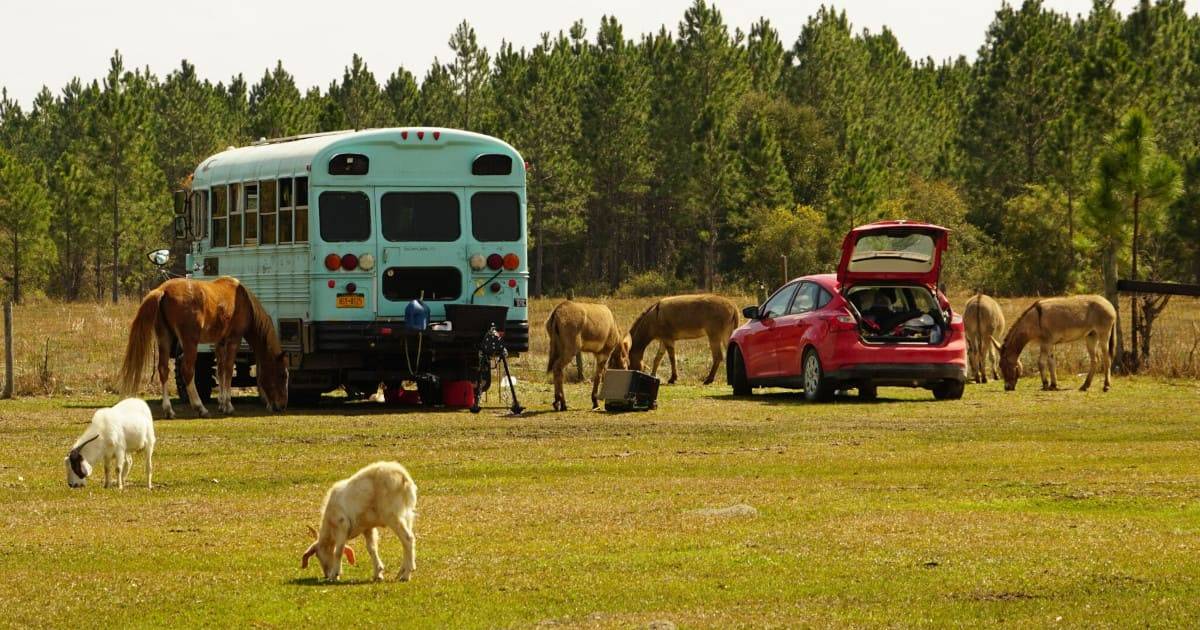The ritual of line-drying feeds my soul, pads my wallet a little, and lessens some of the load on Mother Earth. And as a mother, I know she appreciates any little gesture of care and support.
In March, I can squeeze in three or four clothesline days. The clothes come off the line mostly dry, chilled, and smelling slightly of dirt. Spring is coming. In April, I can get in about ten between the rainfalls. There are often re-washes needed for clothes that fall into the mud.
May to September has the clothesline sagging with everything from beach towels to work coveralls as we holiday and work on repeat, taking full advantage of the heat. Then by October, I’m back to ten or so days (the fragrance of autumn-sun-dried clothes is like falling face-first into a pile of warm leaves), and I know it’s time to close up the garden because winter will be here soon.
This is the rhythm of line-drying in much of Canada.

8 Benefits of Line-drying
- It’s economically and environmentally friendly. In many homes, the dryer is the third most energy-consuming appliance. In fact, according to Green America, a nonprofit that promotes environmentally aware, ethical consumerism, “Air-drying your clothes can reduce the average household’s carbon footprint by a whopping 2,400 pounds a year.” And by skipping the dryer in the hot summer months, you lower temperatures indoors, lessening the load on your air-conditioner or fans.
- It’s gentler on clothes. Clothes tumbling around in a dryer vigorously rub fibres against each other, causing fabrics to wear out faster. The heat also degrades fibres more quickly, and the teeth from an unzipped zipper are far more likely to put a tiny pinhole or snag in your favourite tee when they’re all in
the dryer together. Hopefully, you’re already hanging your wet silks, natural and faux furs, bras, laces, athletic fabrics, swimwear, and any delicates you’d like to keep in good shape. And, if you hang your clothes well, you can skip the ironing. - It’s sunshine for stains. The powerful UV rays of the sun that damage our skin’s DNA can help bleach stains by breaking down their molecular structure. The sun also has antibacterial and odour-fighting power!
- The scent is incredible. The distinctive fragrance of line-dried laundry is due to a photochemical reaction, or exposure to ozone. This occurs when UV light hits the water in our damp clothes and excites certain molecules into forming unique, organic molecules our noses might recognize from plants and
perfumes, such as cardamom, citrusy aromas, and roselike scents. In her article, ‘Chemical analysis and origin of the smell of line-dried laundry’ published in the Journal of Environmental Chemistry, research
scientist Dr. Silvia Pugliese notes that this photochemical reaction could be part of the reason why the air smells so fresh and lovely once the sun comes out after a rainstorm. - It’s safer. According to Canadian Residential Inspection Services Ltd, approximately 15,000 fires are caused yearly by lint buildup in dryers. Heat mixed with flammable chemicals can increase the risk of fire and leave a messy residue on the drum of your dryer, so always air-dry clothing stained with gasoline or cooking oil.
- There’s no need for chemical-filled scented dryer sheets. While they might seem ubiquitous with dryers, dryer sheets are neither necessary nor safe. Dryer sheets are made of polyester and are therefore not compostable or recyclable. And most contain chemicals that react with the air to create formaldehyde and contain other chemicals found in vehicle exhaust.
- It saves your garments and appliance from messy mistakes! When I was 13, I tried to be helpful and do the washing for my mother. I ended up shrinking her favourite wool Ports sweater. Dryers are notorious for shrinking garments and turning forgotten lipsticks, glosses, crayons or gum into messy glue!
- It’s good for your mind and body. For me, this is the most precious reason to hang my clothes on the line. Line-drying forces me to slow down, to breathe in the fresh air, to watch the kids playing while I thoughtfully, yet mindlessly, hang each item. As I look around, I see spring flowers emerge, then summer’s blossoms ripen until I see the colours turn golden. When I wash the bedding, I keep the line low so my kids can discover new caves and tunnels to dash through. A dirty handprint is worth the potential rewash. And, as I hang each item, I can’t help but inspect it for needed repairs, make a note of who’s grown out of what, and remind myself how privileged I am to have other people’s laundry to care for.

My Favourite Clothesline Accessories
Clothespins
Choose metal clothespins if you live somewhere windy, or have lots of heavy items to hang. Metal Lifetime Clothespins by Lee Valley are my favourite.
Choose wooden clothespins if you’re on a budget. I often thrift mine at the ReSource Store. They both work great, but metal lasts far longer.
Line Systems
My favourite is the Ben-More Clothesline Elevator sold by Home Hardware. I’d go for the Ben-More Umbrella Clothes Dryer if I had a smaller yard. The inverted umbrella shape saves you a lot of grief, I promise.
DIY Clothespin Bags
Beginner to advanced sewists will enjoy crafting their own clothespin bag from fabric scraps and an old hanger. There are thousands of tutorials online. But currently, I use a small woven basket with a hinged lid to keep out rain, leaves and insects.
Laundry Baskets
The most important thing in choosing a basket for line-drying is finding a durable and very sturdy plastic basket that can handle lots of weight without buckling on your hip. The Hip Hugging laundry basket from Canadian Tire is affordable and durable. And can double as a ship for imaginative toddlers.

DOS AND DON’TS.
Don’t set your line under a tree. The dripping sap, bird droppings and tree pollen will likely mean you need to do you laundry all over again.
Do soften scratchy line-dried towels by popping them in the dryer for a few minutes.
Do invest in a good amount of quality clothespins. Using them properly will prevent losing your undies on a windy day.
Do try to clear the area below your line from anything you wouldn’t want your clothes to soak in like mud or dog poop.
Don’t leave clothes in the sun all day. The sun can quickly sun-bleach brightcoloured clothing and degrade the fibres.
Don’t hang wool garments on the line. The only way to properly dry wool is to lay it flat on a dry towel, then fold it instead of hanging it in your closet.













